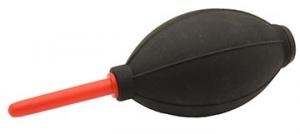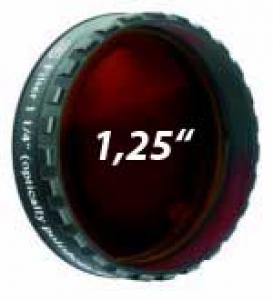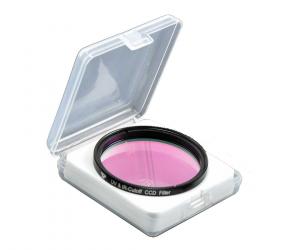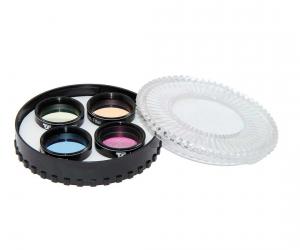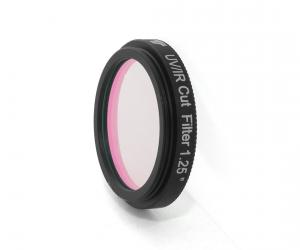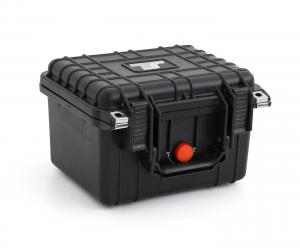- Telescopes
- Overview:
Telescopes - Achromatic Refractor
- Apochromatic Refractor
- Overview:
Apochromatic Refractor - ED Refractor - less color aberration than an achromatic
- SD APO - color free 2-element APO objective
- EDT APO - 3 element ED objective
- High End APO with 3-element APO objective - no color aberation
- Flatfield APO with flat field for Astrophotography
- All Apos and EDs from all manufacturers - large overview
- TS APO and ED from Japan with high quality optics
- Overview:
- Newtonian Telescopes
- Dobsonian Telescopes
- RC Ritchey Chretien Telescopes
- Casssegrain Telescopes
- Reflektor Telescopce with Lens Correcture
- Maksutov Cassegrain Telescopes
- GoTo Telescopes
- Solar Telescopes H-Alpha
- Overview:
- Mounts Tripods Rings Rails Power Supply ...
- Overview:
Mounts Tripods Rings Rails Power Supply ... - Mounts Equatorial with GoTo
- Mounts Equatorial without GoTo
- Mounts Azimutal with GoTo
- Mounts Azimutal without GoTo
- Mounts GoTo - Harmonic Drive
- Travel mounts for astro imaging
- Tripods Piers Polar Wedges
- Mount Control & Electronics
- Dovetail Clamps, Plates and Mount Adapters
- Tube Rings
- Power Supply
- Counterweights Balance Weights
- Mount Accessories - Other
- Overview:
- Telescope Accessories
- Overview:
Telescope Accessories - Eyepieces
- Barlows & Reducer Lenses
- Diagonal Mirrors and Prisms
- Binocular Viewers
- Finder Scopes
- Telescope Collimation and Test
- Cleaning Tools
- Transport and Storage
- Dust protection for Telescopes & Accessories
- Stray Light Protection
- Dewcaps and Heater
- Focusers, Adapters, Motorfocus
- Telescope DIY & Improvement
- Other telescope accessories
- Replacement Parts
- Overview:
- Filters
- Overview:
Filters - Color Filters and Color Filtersets
- Nebular Filters for Visual Observing
- Neutral-Density and Polfilter
- Photo Narrowband Nebular Filters
- Photo Broadband Filters
- Photo Planetary Filters
- Photo R-G-B and IR Cut Filters
- Photo - Filtersets
- Photometric Filters
- Clip Filter for DSLR Cameras
- Filter Wheels and Filterslider
- Solar Filters for white light
- Solarfilter for H-Alpha and Calcium
- Overview:
- Adaptors
- Overview:
Adaptors - Adapter 1,25" and 24,5mm
- Adapter 2"
- Adapter T2 - M42x0.75
- Adapter M48x0,75
- Adapter M54
- Adapter SC
- Adapter M63
- Adapter M68
- Adapter to other Threads
- Adapter Extensions
- Adapter camera bayonet
- Adapter Objective Filterthread
- Adapter Quick Changing , Rotation
- Adapter Eyepiece Projection
- Adapters Tilting
- Overview:
- Astrophotography and Photography
- Overview:
Astrophotography and Photography - Cooled Cameras
- Cameras without Cooling
- Deep-Sky Cameras uncooled
- Set-Offers Camera, Filter, Wheels
- Acessories for Cameras
- Travel mounts for astro imaging
- Imaging Correctors for Telescopes
- Autoguiding Cameras & Sets
- Everything for Guiding
- Focusing aids - Bahtinov mascs
- Flat Field foils and boxes
- Lenses for Cameras
- Piggyback Camera Holder
- Camera Bags, Photocases & more
- Digital Camera and Smartphone Adapter
- Other photo accessories
- Overview:
- Binoculars, Spotting Scopes, Microscopes, Range Finders
- Overview:
Binoculars, Spotting Scopes, Microscopes, Range Finders - Roof Prism Binoculars
- Binoculars with Porro prisms
- Binoculars from 100mm Aperture
- Binoculars with 1,25 inch eyepieces
- TSMX APO Binoculars
- Binoculars for Astronomy
- Binoculars Hiking Bird watching
- Monoculars - Opera Binoculars
- Accessories for Binoculars
- Spotting Scopes
- Range Finders
- Microscopy
- Bags for Phototripods & Binoculars
- Overview:
- Phototripods and Binomounts
- Books, Software
- Overview:
Books, Software - Books for Astronomy Beginners
- Star Charts and Planispheres
- Books about our Solar System
- Observing Tips for Amateurs
- Popular Astronomy Literature
- Teaching material
- Astrophotography books
- Telescopes, Observatories, Construction
- Calendars Yearbooks
- Software, Star Charts
- Books for Microscopers
- Books Nature and Animals
- Nature Photography TimeLapse
- Overview:
- Night Vision, Magnifiers, Weather, Domes & more
- Beginner Astronomy and Gift Ideas
- Second Hand & Special Offers
- New products
Manufacturer: -TS Zubehör
Product number: PO174M
EUR593.00new
EUR 593,00
incl. 19 % VAT (DE)
The VAT indicated refers to that applicable in Germany. After logging in, the VAT amount is adjusted to the applicable VAT of the stored delivery country. Therefore, the final price may vary accordingly.
excl. 6.95 € shipping costs (DE)
more details to the shipping costs ...Please log in to calculate shipping costs to your country.
There are no reviews for this product
- Details..
- Technical data..
- In the box..
- Manufacturer infos..
- Safety informations..
Player One Apollo-M Monochrome Astro Camera for Deep-Sky, Sun and Planets
The Player One Apollo-M is a powerful MONO astro camera with the modern SONY IMX174 sensor. The large field and the good resolution by 5.86 µm pixels make the camera a good all-rounder for moon, planets, but also deep sky.Deep sky astrophotography
The large sensor with 13.4 mm diagonal makes the camera well suited for photography of nebular objects, star clusters and galaxies. A corrector will not be necessary in most cases. The Sony sensor is very sensitive, so you can image faint objects well in just a few minutes. Due to the large 5.86 µm pixels the camera is well suited for different telescopes of f/4 and slower. Also the use on camera lenses is well possible.
Lunar and planetary photography
We recommend an effective focal ratio around f/20 to f/30 to achieve good resolution. This can be achieved very well with good barlow lenses.
Solar photography
The Player One Apollo-M is very well suited for photographing the sun, both in white light and in H-alpha. Against the Newtonian rings in solar photography, sensor tilting helps, which the Player One Apollo-M also offers.
Use as an autoguider
At only 180 grams, the Player One Apollo-M is a lightweight. It hardly loads the focuser. Of course, the camera offers the ST-4 autoguiding interface. A 2 meter autoguiding cable is also included.
Anti-reflective clear glass filter protects the sensor from dust
The clear glass filter prevents dust from getting to the sensor. It also lets UV and infrared through, so you can also do infrared photography with the camera. You have full control over what light hits the sensor with the right choice of contrast filters, nebula filters or UV/IR blocking filters.
DPS technology against hot and dead pixels
The DPS (Dead Pixel Suppression) analyzes dark frames and selects the abnormal pixels. In imaging, these unwanted pixels are overwritten and then no longer appear. The image becomes smoother. The technology works similarly to a dark frame.
Air cooling - reduces the sensor temperature
The sensor heats up during the exposures. The PCS dissipates the heat from the sensor via a heat conducting pad. The sensor temperature is thus reduced by up to 15 degrees Celsius compared to cameras without PCS.
Here you can find drivers, software, a manual for the camera and hints for solar photography
| Sensor: | CMOS sensor Sony IMX174 MONO |
| Size: | 11.34 x 7.13 mm - diagonal 13.4 mm |
| Pixel size: | 5.86 µm |
| Resolution: | 1936 x 1216 pixels - 2.3 megapixels |
| Bit: | 12 Bit |
| Power supply: | Via USB - no separate power supply necessary |
| Connection thread telescope side: | M42x0,75 (T2) internal thread |
| Distance sensor to thread: | 12.5 mm back focus |
| ST-4 autoguiding interface: | yes |
| max. frame rate: | 164 frames per second at full resolution with USB3.0 |
| Manufacturer / Importeur: | Teleskop-Service Ransburg GmbH |
| Street: | Von-Myra-Str. 8 |
| ZIP / City: | 85599 Parsdorf |
| Country: | Germany |
| Telefon number: | +49 89 99228750 |
| Email: | info@teleskop-service.de |
| Website: | www.teleskop-express.de |
Safety informations: PDF Download
Recommended accessories
Cleaning & Collimating
General Accessories
Photo Acessories
TS-Optics LRGB Filter Set 1,25 Zoll - Low-Profile Interference Filter Set
EUR 179,00RRP EUR 199,00you save 10.1% (EUR 20,00)
Similar Products
TS-Optics Apollo-C USB3.0 COLOR Astro Camera Sensor D=13.4 mm
EUR 599,00RRP EUR 694,00you save 13.7% (EUR 95,00)
Transport & Covers
TS-Optics Protect Case waterproof hard case - width 271 mm
EUR 34,98RRP EUR 44,95you save 22.2% (EUR 9,97)
Reviews






















